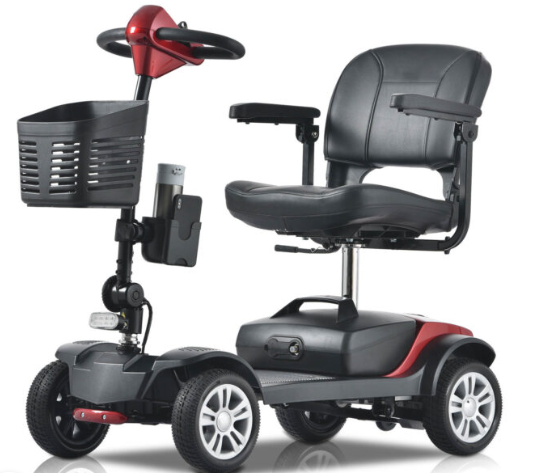When it comes to regaining independence and moving around effortlessly, a lightweight mobility scooter can make a world of difference. Whether you’re exploring the local park, shopping, or travelling further afield, having a reliable scooter tailored to your needs is essential. Here, we’ll dive into ten proven tips for choosing the best lightweight mobility scooter, ensuring you make an informed decision.

1. Understand Your Requirements
The first step in selecting the ideal mobility scooter is to evaluate your needs. Consider:
- How far you intend to travel daily.
- The types of terrain you’ll navigate.
- Whether you’ll need to transport the scooter in a car.
By defining your requirements upfront, you’ll narrow down your options effectively.
2. Weight and Portability
As the name suggests, lightweight mobility scooters are designed for portability. Look for scooters made from durable yet lightweight materials like aluminium. Pay attention to the scooter’s total weight, as well as whether it can be disassembled or folded for easy transport.
3. Battery Life and Range
One of the most critical aspects of any mobility scooter is its battery life. Ensure the scooter can comfortably cover the distance you’ll travel daily without needing frequent recharging. Many modern lightweight mobility scooters offer ranges of up to 15 miles or more on a single charge.
For detailed reviews on battery performance, consult reliable sources such as Mobility Expert.
4. Comfort and Adjustability
Comfort is paramount when using a mobility scooter for extended periods. Look for features such as:
- Adjustable seats and armrests.
- A padded, ergonomic design.
- Easy-to-reach controls.
Test different models to find the best fit for your body size and comfort preferences.
5. Check Safety Features
Safety should never be compromised. Key safety features to look for include:
- Anti-tip wheels.
- Reliable braking systems.
- Bright LED lights for visibility.
- Reflectors and horn functionality.
These features ensure a safe and secure ride, especially in busy or dimly lit areas.
6. Manoeuvrability and Turning Radius
For indoor use or navigating tight spaces, the scooter’s turning radius is a critical factor. A compact, lightweight mobility scooter with a small turning radius offers enhanced manoeuvrability, making it easier to use in crowded places.
7. Consider Weight Capacity
Each scooter has a maximum weight limit, which you’ll need to match with your body weight. Overloading a scooter can reduce its efficiency and lifespan. Be sure to choose a model that comfortably supports your weight with some margin.
8. Warranty and Customer Support
A robust warranty and reliable customer support are signs of a reputable manufacturer. Opt for brands that offer a minimum of one year’s warranty on parts and battery. Additionally, ensure customer service is easily reachable should you encounter issues.
9. Compare Prices and Reviews
While price is always a consideration, don’t base your decision solely on cost. Compare reviews on high-authority websites like Which? or Trustpilot to gauge real-world performance and customer satisfaction. Balance affordability with features and quality.
10. Test Before You Buy
Whenever possible, test a scooter in person before purchasing. This allows you to evaluate comfort, ease of use, and overall suitability. Many retailers offer demonstration sessions or trial periods.
Final Thoughts: Why Lightweight Mobility Scooters Are a Game-Changer
Choosing the best lightweight mobility scooter can transform your daily life, restoring freedom and independence. By carefully evaluating factors like portability, battery life, and comfort, you can make a confident choice that suits your lifestyle.
For additional insights and product comparisons, visit trusted resources like Age UK Mobility.
Investing in a lightweight mobility scooter isn’t just a purchase—it’s an investment in your quality of life. Take the time to explore your options and make an informed decision that meets your unique needs.

